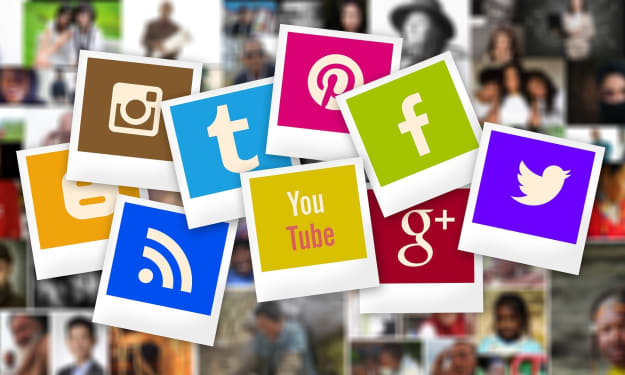
Introduction:
With its ability to connect millions of professionals globally, LinkedIn has emerged as the top professional networking site. LinkedIn presents a distinctive chance to grow your professional network, demonstrate your knowledge, and create lasting relationships thanks to its large user base and robust features. The ability to write a strong introduction is one of the essential skills to acquire on LinkedIn. This post will address the importance of a solid LinkedIn introduction, offer advice on how to write one, and go through the advantages of utilizing LinkedIn's networking features.

What is LinkedIn?
LinkedIn is a social media site specifically designed for professionals and businessmen. It platform as an online CV, networking tool, and a site for sharing business-related content. LinkedIn allows users to make a profile that highlights their professional experience, skills, education, business, and achievements. It enables individuals to connect with colleagues, industry peers, future employers, and clients, build business partnerships, and professional relationships, and make opportunities for career advancement.
Importance of a Strong LinkedIn Introduction
You have the opportunity to leave a lasting impression with your LinkedIn introduction. It is the first time a possible connection interacts with you, and it establishes the tone for all future interactions. A skillfully worded introduction may arouse curiosity, demonstrate your skills, and attract the interest of others, opening the door to important contacts and chances. A solid introduction may dramatically increase your chances of success, whether you're looking for employment prospects, business relationships, or simply to widen your network. LinkedIn is a platform for professional networking that enables users to interact with coworkers, experts in their sector, and possible employers. Here is a detailed tutorial on how to utilize LinkedIn efficiently.

Examples of Effective LinkedIn Introductions
Here are some good examples of LinkedIn introductions to assist you understand the principles discussed:
"Hi [Name], I came across your profile and saw that you had a lot of digital marketing expertise. Recently, I read your post on content strategy, and it was quite similar to how I operate. I'd love to get in touch and share knowledge in the area.
"Hello [Name], I attended the recent in your industry conference where you delivered an inspiring and motivational keynote on leadership. Your insights resonated with me, and I would be honored to connect and learn more from your expertise.
Tips for Writing a Strong LinkedIn Introduction
Be careful to avoid the following errors while writing your LinkedIn introduction as they might reduce the impact of your message:
5.1 Impersonal and generic messages
Poor response rates might result from sending communications that are impersonal and generic. Spend some time personalizing each introduction, including the recipient's name, and giving relevant information to demonstrate that you have done your research.
5.2 Overly Pushy Method
LinkedIn is not the place for pushy sales tactics. It might come out as aggressive and turn away prospective connections, so try to avoid employing a too salesy tone in your introduction.
5.3 Spelling and Grammar Mistakes
Spelling and grammar mistakes can detract from your professionalism and attention to detail. Before submitting, check your introduction for errors.
Create a profile:
Open a LinkedIn account and fill out your information. Include a professional profile photo, your schooling, your abilities, and your work history. Create a strong summary that highlights your area of expertise and professional objectives.
Edit Your Public Profile URL to Make It Professional: Edit Your Public Profile URL to Make It Professional. Sharing your profile becomes simpler and looks more professional.
Build and Make Your Network: Connect with coworkers, students, acquaintances, and other businesspeople in your field to expand your network. Make use of the advice LinkedIn offers based on your email contacts. Make connection requests more specific to maximize the chance of approval.
Find and join LinkedIn relevant groups: that are relevant to your industry or hobbies. Take part in discussions, offer insightful commentary, and establish connections with other group members. By doing this, you may widen your professional network and present yourself as an expert in your sector.
Post Engaging Content: Post articles, updates, and other material that is pertinent to your sector in order to share engaging information. To demonstrate your professional competence, share your knowledge, ideas, and thought leadership. Comment on and like other people's postings in order to interact with them.
Find Career Opportunities: LinkedIn offers a powerful job search tool. Jobs may be found using a variety of criteria, including area, industry, keywords, and more. Create job alerts to get notified of new positions that meet your requirements. You may keep up with a company's activity and job vacancies by following it.
Request and Provide References: To increase the legitimacy of your profile, ask for references from coworkers, superiors, or clients. Make recommendations for people whose work you value and with whom you have had pleasant interactions. This reciprocal interaction fosters business ties.
Use LinkedIn Learning: Through LinkedIn Learning, LinkedIn provides a variety of online courses. To improve your knowledge and abilities in your area, look into related courses. The ability to display your dedication to professional growth by adding completed courses to your profile.
Participate in Business Discussions: LinkedIn includes a tool called "LinkedIn Feed" that allows you to view updates from your contacts and pertinent news in your sector. Participate in conversations by leaving comments on topics, contributing your knowledge, and posing insightful inquiries.
Use LinkedIn Messaging: Use LinkedIn's messaging tool to send customized, business-like messages to other professionals. To connect, ask for help, or investigate prospective prospects, send messages. However, ensure your messages are relevant, concise, and respectful of the recipient's time.
The Power of Networking on LinkedIn
LinkedIn offers powerful networking capabilities that can significantly impact your professional growth. By actively engaging with other professionals, You may increase your expertise, gain industry insights, discover new opportunities, and build strong relationships that can lead to collaborations or career advancements.
Building Strong Connections through Your Introduction
Your LinkedIn introduction tool as the foundation for building strong connections. From the very beginning, rapport, trust, and mutual understanding right from the start. An effective introduction can open doors to meaningful conversations, partnerships, and even mentorship opportunities.






Comments
There are no comments for this story
Be the first to respond and start the conversation.